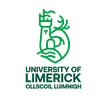Analysis: the Irish connection grid means we're always striving to find a link to make the world smaller
This article is now available above as a Brainstorm podcast. You can subscribe to the Brainstorm podcast via Apple Podcasts, Spotify, Stitcher or wherever you get your podcasts.
I recently eavesdropped on a conversation between two German neighbours of mine who were meeting for the first time. In fact, I had just introduced them to each other, remarking that they were both originally from the same country. They proceeded to chat away on where they had grown up and quickly established that they originated from neighbouring villages in the northern part of Germany. They then changed the topic and chatted about something else completely different.
I fell off my chair! We were in the pub but it wasn't inebriation that literally floored me: it was the missed opportunity to continue with the same topic and to establish, at a minimum, one person or place that they had in common. The realisation slowly dawned that perhaps, this was a more a conversational trait associated with being Irish.
We need your consent to load this rte-player contentWe use rte-player to manage extra content that can set cookies on your device and collect data about your activity. Please review their details and accept them to load the content.Manage Preferences
From RTÉ Archives, Barry Cummins reports for RTÉ News in 2008 on a new website which aims to make it easier for anyone researching their Irish ancestry.
It's true that we love to talk as a nation. Research has shown that this dates back to our farming collective background, where sharing workload and tools also extended to sharing our conversation with others. We are hospitable in our chat. Although we can be indirect in our conversation and are careful about not offending others, we turn into elite interrogators when it comes to determining mutual acquaintances. We are curious to know even if someone met anyone on their travels even if they've just popped out to the shop for a pint of milk. Did they have the opportunity to connect even if just for a brief chat about the weather?
Back in 2010, freezing weather conditions caused one misfortunate man to slip on ice. This was captured on screen by a RTÉ crew who had their camera set up to film outside the Four Courts in Dublin. However, the national conversation that ensued was not about the poor man's wellbeing but rather the endeavours to establish his identity. Somebody must know him. To this day, Irish media celebrate the occasion of the anniversary of the mystery man's fall as he has become a legend in remaining unidentified in a country where connections are always made.
We need your consent to load this rte-player contentWe use rte-player to manage extra content that can set cookies on your device and collect data about your activity. Please review their details and accept them to load the content.Manage Preferences
From RTÉ Archives, the infamous 'man slips on ice' clip
This desire to connect relates to the Irish kinship system being the dominant social structure in Ireland for several centuries. Many households comprised of three generations and, as the young reached maturity, they were expected to marry and continue on the tradition of raising the next generation. Up to the last century, two thirds of the Irish population lived in rural communities of 200 or less. The marriages that were forged were with neighbours who then became kin for the next generation. Although the details don't appear on any census form, first out to fifth cousins could be tracked. Our national ability to count cousins serves us well when it comes to welcoming "cousin Joe".
An Irish graveyard, many people's final resting place, is an important archive of this kinship system. Irish gravestones predominantly display two important pieces of information: where the person came from and their relationship to others. Even in death, we are known by our ties to person and place.
This patchwork of connections continues today. Tom Inglis’s recent social study focuses on Ballivor, a rural village in Co. Meath which can be now considered a dormitory community for Dublin-based workers. Over the past 20 years, there has been an influx of new inhabitants from Ireland and abroad. This pattern has been repeated in villages and towns across Ireland.
We need your consent to load this rte-player contentWe use rte-player to manage extra content that can set cookies on your device and collect data about your activity. Please review their details and accept them to load the content.Manage Preferences
From RTÉ Radio 1's Doc On One Archive, 1996's Goodnight Ballivor, I'll Sleep in Trim sees radio producer John Quinn remembering his childhood in the Meath village of Ballivor
But what still exists in these towns and villages is a strong sense of identity and eagerness to map out a conceptual grid of connections with others. While an individual's grid may have extended from being a parochial to a national grid, you can guarantee that they will know of others in the village who have originated from the same part of the country, whether that be Cavan or Clare. Ease of travel simply means that we have expanded our network of connections.
Previous generations of emigrants continued the kinship bond through sending money back to support those who remained at home. What about today's younger generation who are truly global citizens, as much at home in Dubai as in Dublin? The tweet below shows that Irish people will always find each other and make that connection, even on a beach in Australia on Christmas Day. They just need an opening line of conversation. Reading the responses to the tweet further confirms the Irish propensity to connect as one responder introduces herself as the sister of one of the other lads!

Since the foundation of the Irish state, the establishment of GAA club at local, regional and national level has firmly contributed to a strong sense of Irish identity. It's no surprise that GAA clubs have sprung up across the globe in response to Irish people putting down roots in far flung places. The heart-warming story of the Stockholm Gaels defending their Scandinavian Championship title is the essence of Irish people maintaining a strong connection with their Irish identity.
While the Irish diaspora no longer labour to send money home to family in Ireland, it is undoubtably true that they work hard at preserving the Irish connection with subsequent generations. American presidents aside, we have a plethora of well-known Irish descendants to call upon. Ed Sheeran, whose grandparents were Irish, talks about introducing his daughter to her Irish family. He is specific about who they are and where in Ireland they are from. Simply put, the world becomes a smaller place when we chat and light up the Irish connection grid.
The views expressed here are those of the author and do not represent or reflect the views of RTÉ


